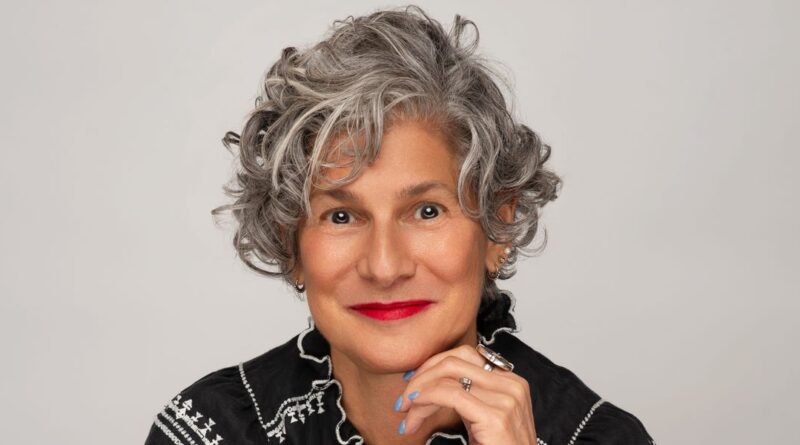Older job seekers may be hurting their chances of landing a job. A career coach shares 5 strategies to avoid self-sabotage.
At age 54, executive career coach and strategist Loren Greiff worked at one of the world’s most well-respected executive search firms.
Her experience as an older worker inspired Greiff, who’s based in Asheville, North Carolina, to found her own career coaching business — PortfolioRocket — in 2020.
Greiff, now 61, aims to help executives over 40 take their next career step and avoid being put out to pasture. Since launching her business, Greiff has helped candidates land jobs at companies such as Meta, Target, Ford, and Dick’s Sporting Goods.
Ageism within organizations isn’t the only problem
Working with older employees over the past four years, Greiff told BI the problem isn’t just ageism in organizations; negative beliefs held by the candidates themselves may keep them from reaching their career potential.
“The first belief — and also the biggest lie — is that they’re powerless against ageism,” Greiff said. Acknowledging the bias exists does not mean candidates don’t have the agency to overcome it, the coach said.
According to Greiff, the second mistake many older job seekers make is believing buzzwords hiring managers may use, like “overqualified,” “too expensive,” and “not a culture fit.” Instead, she said, words like these may mask biases or deeper systemic issues in the organization.
In making her own job transition as an older candidate and guiding others in this age group through theirs, Greiff has devised job-search strategies that help over-40s combat negative thought patterns and direct ageism during applications and interviews.
She emphasized that older employees need to repackage their deep work experience, using these five strategies:
1. Accept that added years of experience don’t automatically add up to added value
Greiff shared that many older candidates she’s coached assume that work experience and career relevance are one and the same. But she said two decades of experience might be worth less to employers than someone else’s two years if a candidate can’t show they’ve been building value.
“Experience is time; relevance speaks to the impact to lead and drive for now and what’s next,” she said.
“Decision makers seek agility and willingness to learn outside of what you already know,” Greiff added, saying candidates shouldn’t rely on their time in a role to speak for itself. “Start addressing the underlying issues decision makers are concerned about most.”
2. Stop referring to all of your experience in the past tense
According to Greiff, decision makers aren’t scrolling LinkedIn to verify your past — they’re hunting for clues about your present.
“Do you think like someone who gets it? Do you engage like someone who’s still in the game? Do you comment like someone who sees around corners?” she asked. “The market cares less about what you’ve done. It cares more for what you’re doing.”
While it feels natural to use the Past tense in summaries since the work experience section highlights prior positions, Greiff emphasized that doing so can be a career killer.
“This is positioning you as a ‘has-been’ akin to an obit, sending a signal that your best days are over,” she said.
Instead of writing, “Created new growth channels and elevated brand health from #5 to #2,” Greiff recommends keeping yourself more relevant and present tense with phrasing like, “Revenue and partnership growth expander, systematically advancing global brand health from bottom-tier to near-leadership status.”
3. Replace has-been narratives with data-driven ‘tomorrow stories’
Even when describing something you achieved in a previous job, Greiff advises integrating metrics that point to the future to avoid appearing like old news.
“Stop giving them reasons to worry about your value or impact and start giving them reasons to buy it — numbers don’t lie, and they don’t age,” she said. “Don’t say ’20 years in tech.’ Say, ‘Company transformer through AI integration, most recently reducing costs by 40%.'”
She said older candidates should provide numbers to address a hiring team’s spoken or unspoken fears. Be prepared to provide data-driven proof of your ability to continue delivering measurable results and share ROI figures that show you’re worth what you cost.
4. Show active continual learning
It’s vital in many industries to demonstrate that you value lifelong learning and development, which points to your future impact.
Greiff stressed that it’s fair — and savvy — to consider experiences you’ve had outside the workplace as part of this dialogue. She shared that a client in her early 50s was applying for C-suite roles, and leveraged that she’d recently climbed Mount Kilimanjaro during her executive job search.
“In every networking conversation, her mountain stories became a metaphor for her agility and capabilities,” Greiff said. “Anyone can take a course, but it takes unique character to train and climb a serious mountain like Mt. Kilimanjaro.”
5. Prove career evolution and growth
It’s also important for senior-level job seekers to reveal their true career growth through their work history.
Another one of Greiff’s clients originally felt like he’d aged out of the tech industry. He decided to package his career evolution, including his freelance work, as an asset.
“While other 40+ creatives were ashamed of their freelance patchwork, he showcased every single gig — 22 of them — on LinkedIn,” Greiff said. “Most older workers think job-hopping makes you look like you’re inconsistent or can’t hold down a job, but he made it look like he wasn’t bouncing around — he was building.”
As a result, hiring managers didn’t see him as a washed-up applicant but someone who was committed to evolving his craft, and he got an offer from a Big Tech company.
“Energy beats experience when packaged right,” Greiff said. “Age becomes irrelevant when your value becomes undeniable.”
Do you have a story to share about job searching in your 40s, 50s, and beyond? Contact this editor, Jane Zhang, at janezhang@businessinsider.com.





